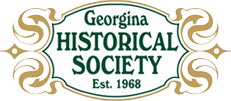Click to Download the PDF
Download the Word Doc
President’s Message
Welcome to the February, 2022 edition of the Georgina Historical Society Newsletter.
With the recent easing of public health and safety measures, we are more optimistic that we will soon be able to return to normal activities and events. As soon as guidelines allow us to set a date and venue for a General Meeting we will send you an update.
Thank you to everyone who has renewed their membership in the Georgina Historical Society for 2022, your support is greatly appreciated! It is not too late to purchase a 2022 Georgina Historical Society calendar as we still have a few left. Contact me or any board member to purchase your calendar. The $15 purchase price goes to support the refurbishing of the caboose and other GHS projects.
The past year, the Robert Johnston Cemetery in Pefferlaw has been in need of our support. Unfortunately, it is not the only Pioneer Cemetery in Georgina in need of attention. The Mann/Sprague on the Queensway North and the Sheppard Cemetery on Boyers Rd. are also in need of support from the GHS. I wonder how many other Pioneer Cemeteries in Georgina need a little more attention. Are there long ago markers in farmer’s fields that are in danger of being lost or small cemeteries in abandoned church yards needing attention? Regrettably, not all burial sites got included in the Ontario GenWeb Cemetery Project. It is time for the Georgina Historical Society and its members to update our knowledge of Georgina’s cemeteries and burial sites. We welcome your assistance on this concern.
Thank you,
Tom Glover, President
Below are some images of the Mann/Sprague and Sheppard cemeteries. Other than tombstones that are often askew or overgrown with vegetation there is nothing to identify them. These are the resting places of some of our earliest pioneers and deserve more respect and attention than they are getting.
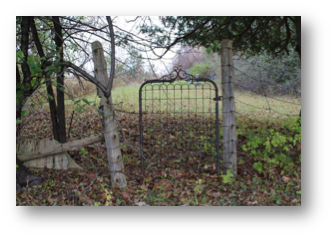
Sheppard Cemetery, on Boyers Road; there is nothing more than a simple gate leading to a few tombstones to indicate the presence of a cemetery.
Below and right are two images of the Mann/Sprague Cemetery on the Queensway North. A fairly large cemetery, some gravesites near the back are so overgrown that they are nearly impossible to find.
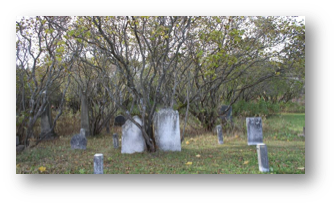
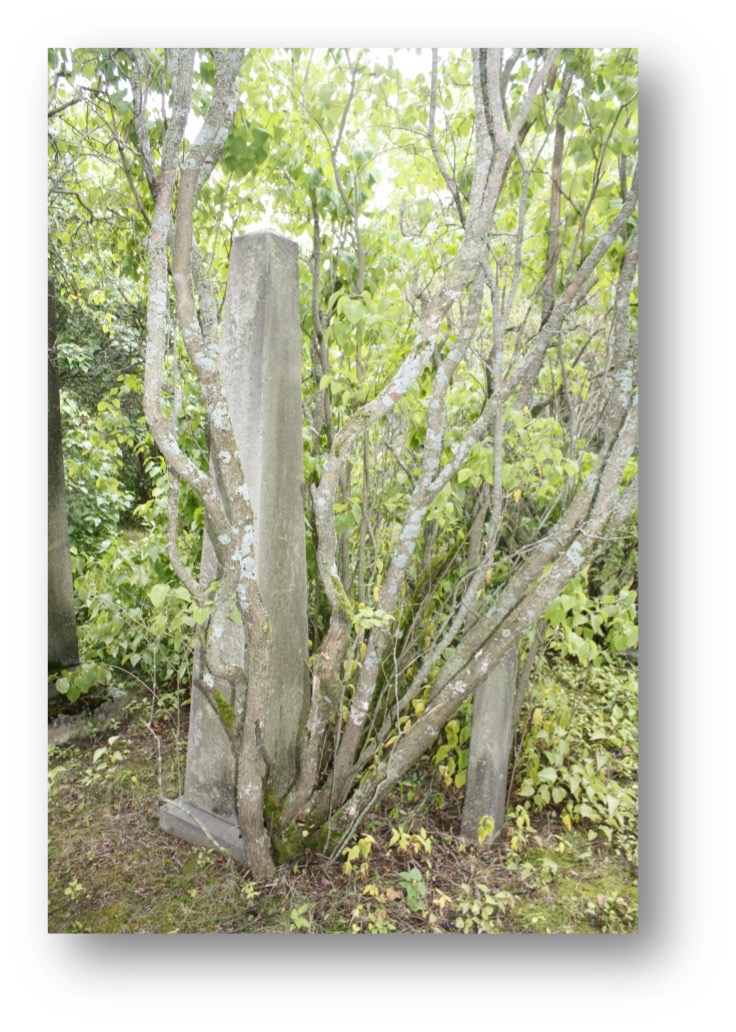
Steamboating’s Golden Age
1885-1900
By R.W Holden
While Steamboating flourished on much of the Trent waterway, it struggled on lakes Simcoe and Couchiching. The Trent valley reached its peak numbers of vessels with pleasure boats, passenger ships, workboats and even dredges everywhere. In 1891 there were 22 steamboats and 11 palace scows on the water (the latter being huge flat bottomed barges towed by steamers that started out as barges used to carry cargo during the week, and then with seats and tables added on weekends for holiday travellers. They were later used exclusively for passengers).
However, on Simcoe and Couchiching, there were only two regular excursion-sized steamers – the Enterprise and Islay, three if you count the occasional services of the Longford. A resort on Strawberry Island was developed, but never realized the financial expectations of its owner, Captain McInnes. Rail seemed to be king.
Private steam yachts and launches were more common. Tugs and workboats were on the northern reaches of Lake Couchiching and on the Severn River as the lumber trade was still very active there.

Steamer “Enterprise” 1868-1903
http://www.torontopubliclibrary.ca/detail.jsp?Entt=RDMDC-PICTURES-R-908&R=DC-PICTURES-R-908&searchPageType=vrl
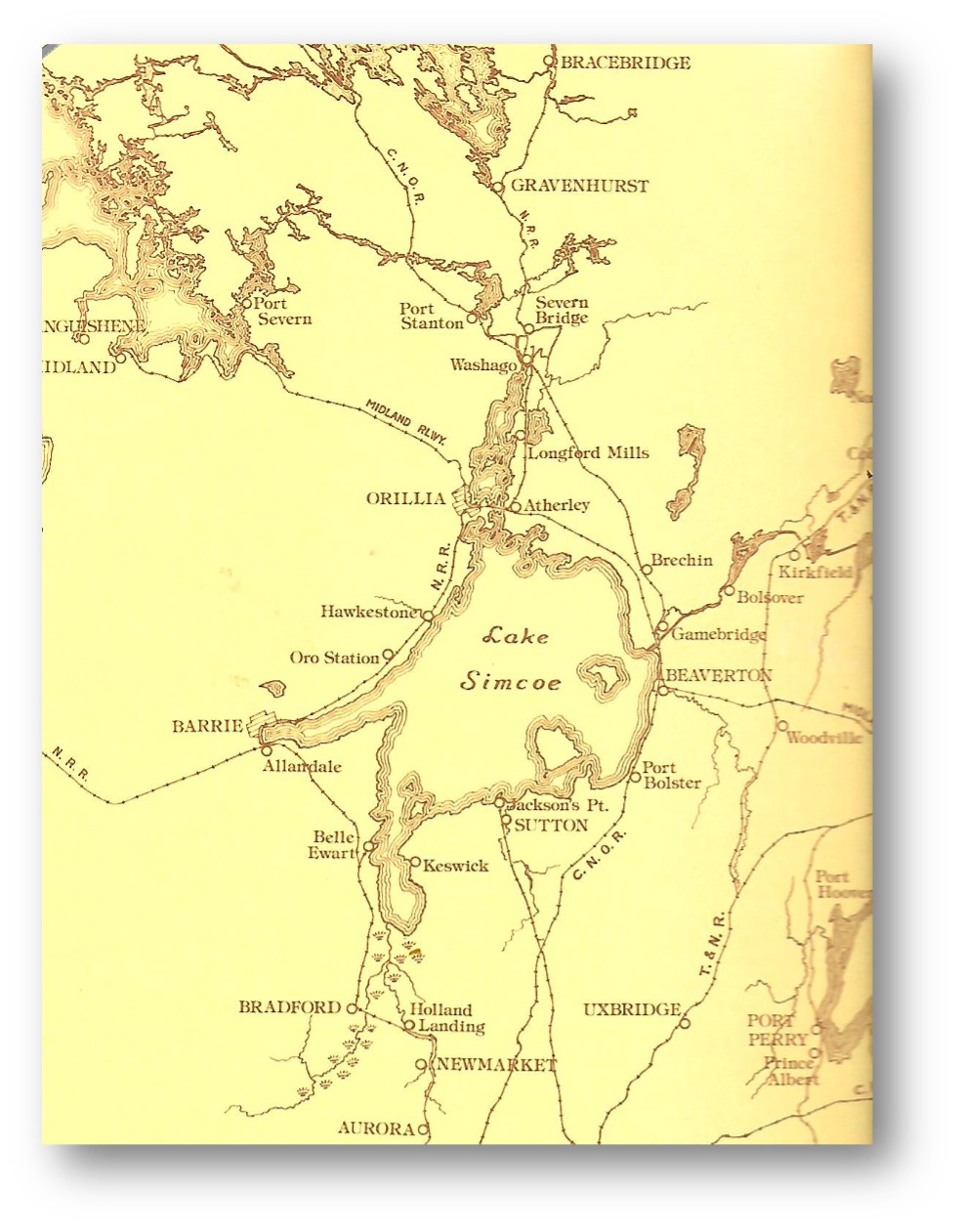
Regular Ports of Call
for the Steamboats
Railway Map ca.1880
The Enterprise was not only kept busy serving the needs of travellers, but also carried freight, and shepherded numerous giant log booms to the railways and saw mills in the south.
Georgina Public Archives
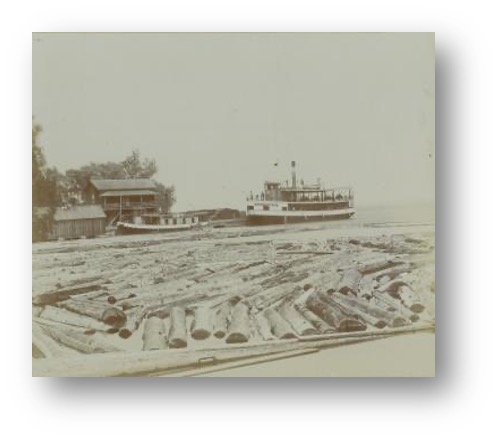
The year 1868, the year after Confederation and incorporation of Orillia, saw the building of the greatest workhorse of all lake steamers on these waters. The Couchiching was a schooner which, later lengthened to 81 feet, was transformed into the SS Enterprise after years of sailing on Lake Simcoe mostly from her launch site, at Portage Bay on Lake Couchiching, to the then head of rail at Belle Ewart. Possibly no vessel on these lakes carried more stone and limestone products to market than the Couchiching/Enterprise. She was the only twin-prop steamship ever built on Simcoe/Couchiching shores. Built on a schooner hull, she lasted in all for 35 years, setting many records, including towing a 1,000-log boom to market. She also saw much service in the excursion trade. With a failing hull, her mechanical components were removed in 1903. Enterprise was then towed to deep water off Jackson’s Point where she was scuttled and may still be viewed resting on the bottom.
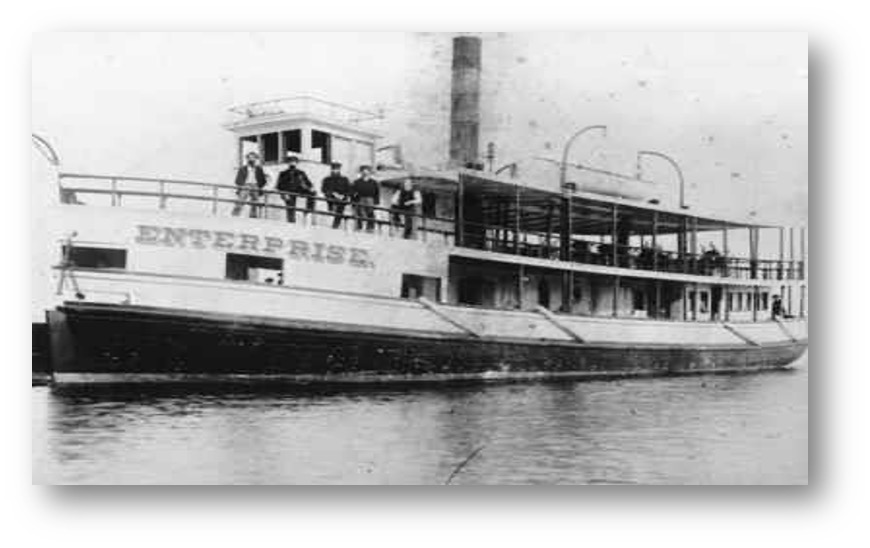
Steamer Enterprise on Lake Simcoe
From the collection of Miss Susan Mulcahy, Orillia
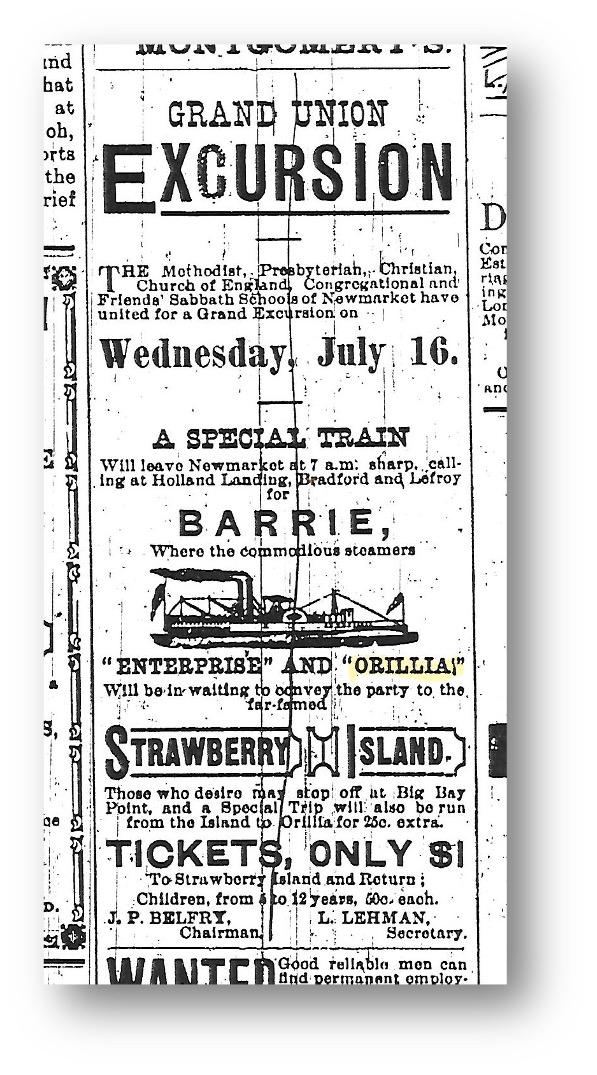
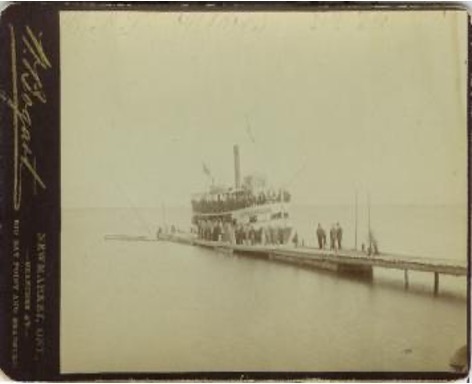
Above the Enterprise boarding passengers
Left – This 1890 advertisement for an excursion would have been posted in the pages of the Orillia Times, The Barrie Northern Advance, and The Newmarket Era prior to the sailing date of the trip.
From Steamboat Orillia/Islay by Bill Hester, courtesy Georgina Public Libraries (GPL)
Below is the Steamer Orillia as she was seen cruising on Lake Simcoe
Courtesy Mr. Harold Rowlands, Orillia
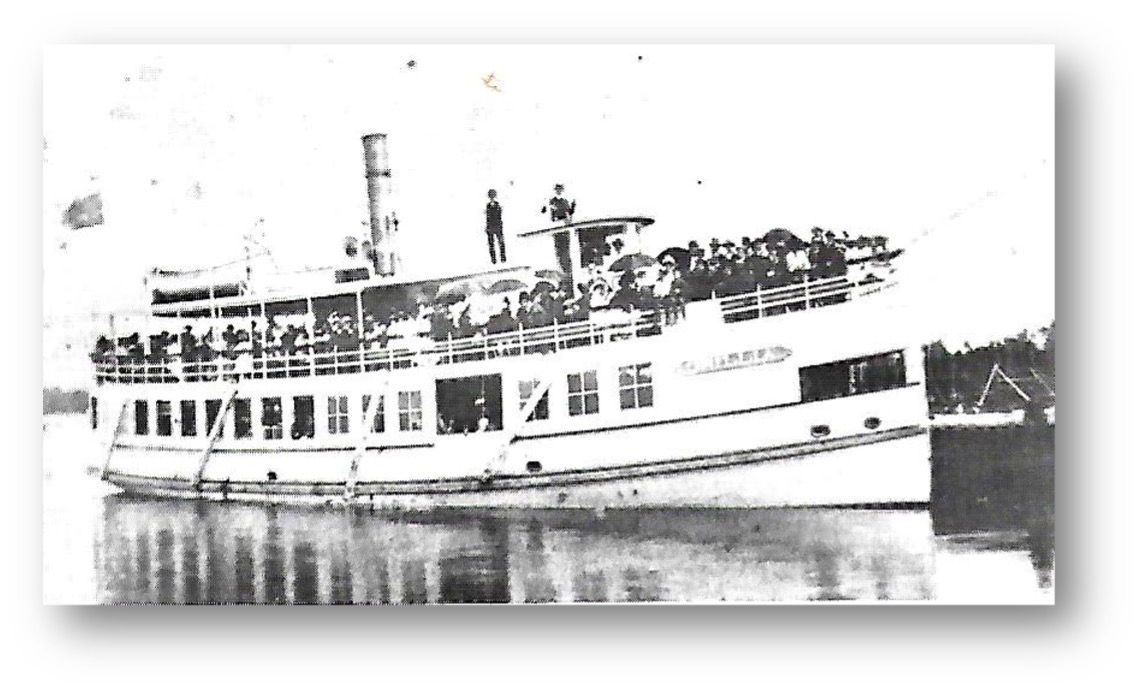
The Steamship Orillia/Islay 1884-1919
The steamer Orillia was built under the supervision of a Buffalo shipwright and became the first large steamer launched in Orillia. Her owner, Captain Charles McInnes put her to work in the excursion trade and in ferrying supplies and building materials for his new resort on Strawberry Island. A double-decked screw-driven vessel, she was 85 feet at the keel and displaced 91.47 tons. She was the fastest steamboat on the lakes at that time, but her earnings were disappointing. By 1894, she developed chronic engine trouble and was dry-docked.
Taken completely apart, she was lengthened 35 feet, relaunched and renamed Islay in June of 1895. A splendid looking vessel, she was now 116 feet at the keel, displaced 175 tons, and licensed for 300 passengers. For the next 19 years she was the queen of Lake Simcoe. In 1914, McIinnes ran into financial trouble and his beloved island and vessel were put up for auction. Removed from service and beached near Couchiching Park, she languished in storage until 1919 when she caught fire and was completely consumed.
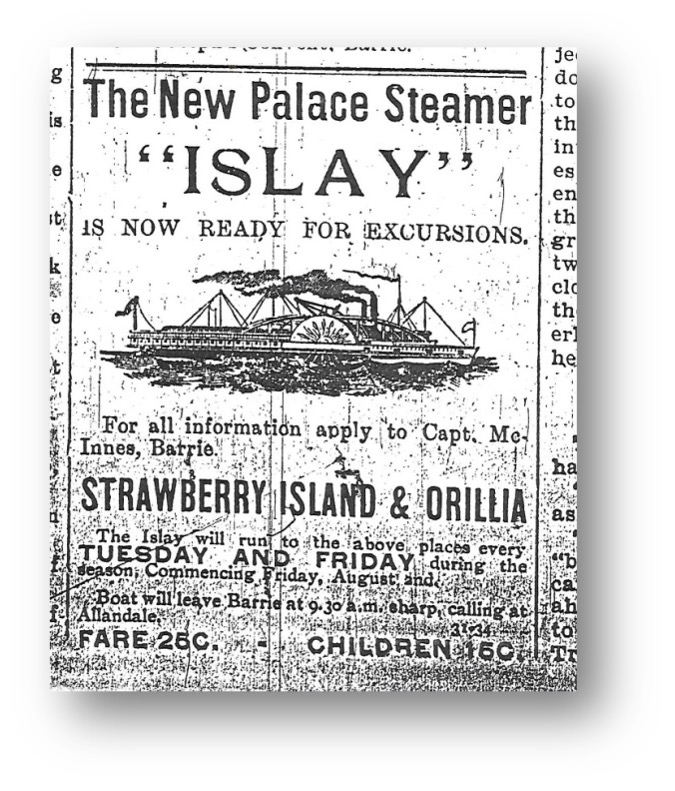
Left– June 12, 1895
Advertisement in the Barrie Examiner announcing the new steamer “Islay” which replaced the Orillia after the latter received an extensive refit.
Left– June 12, 1895
Advertisement in the Barrie Examiner announcing the new steamer “Islay” which replaced the Orillia after the latter received an extensive refit.
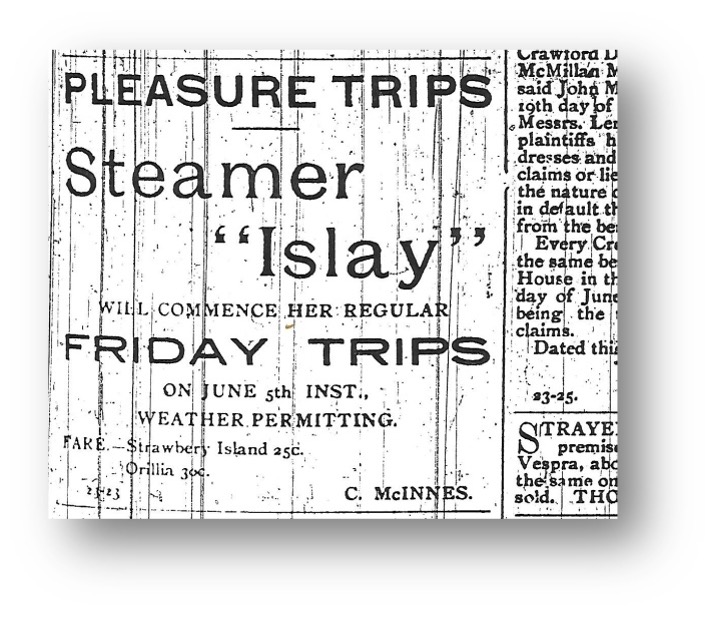
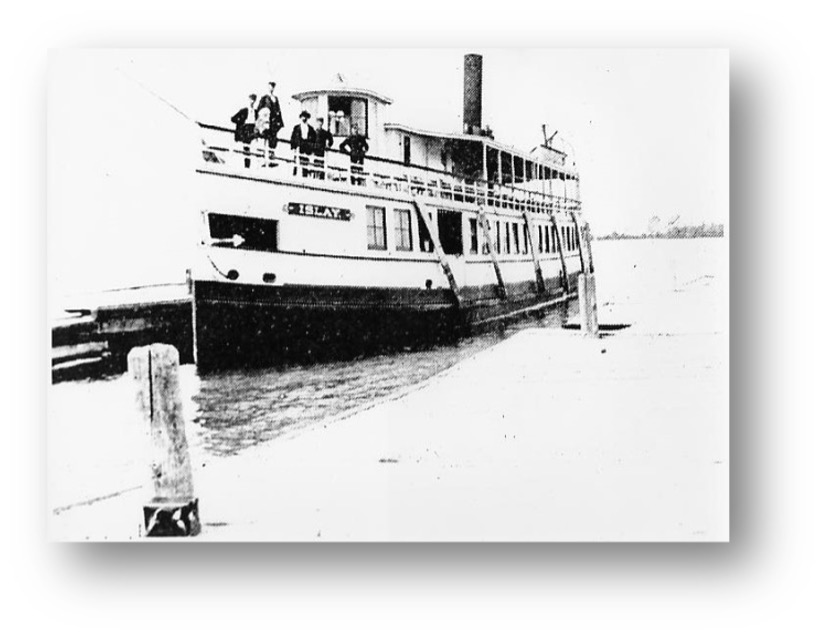
Photo of the Lake Simcoe steamer named “Islay” taken while docked. Several crewmen or passengers are visible standing on the deck and posed for the photo. The tall man is Captain Frederick Mackay. It operated as part of the Lake Simcoe Navigation Company, and was the last large commercial steamer on the lake.
http://www.ourstoriesinnisfil.ca/islandora/object/ourstories%3A3544
Below right – the Islay is on excursion at Jackson’s Point – sometime between 1901 and 1910.
https://www.facebook.com/VintageLakeSimcoe
While water transport was important it did not have the significance and influence of the rails. By the beginning of the 20th century railways had completely encircled Lake Simcoe and had become the prime movers of both people and freight. As a result, most commercially viable steamer services on the lake finally disappeared by World War I.
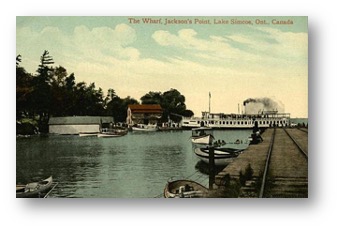
Maple Syrup ~ By Tom Glover

Maple Syrup season is fast approaching. Yes, one of the things to look forward in February is the aroma of maple syrup boiling over an open fire. Usually, towards the last week of the month of February the days start getting warmer and the sap begins to flow… time to get out the brace and bit, spiles and buckets and start tapping the maple trees.
Unlike today, with power drills, plastic pipes and pumps making maple syrup in our parents and grandparents day was very labour intensive. First the trees were drilled by hand with the brace and bit and the spile gentle tapped in to the tree. A metal bucket was then hung from the spile and you were ready for the sap to flow. The sap was dumped from the buckets into a barrel on a flat sleigh hauled through the wood lot by a team of horses to the boiling shed.
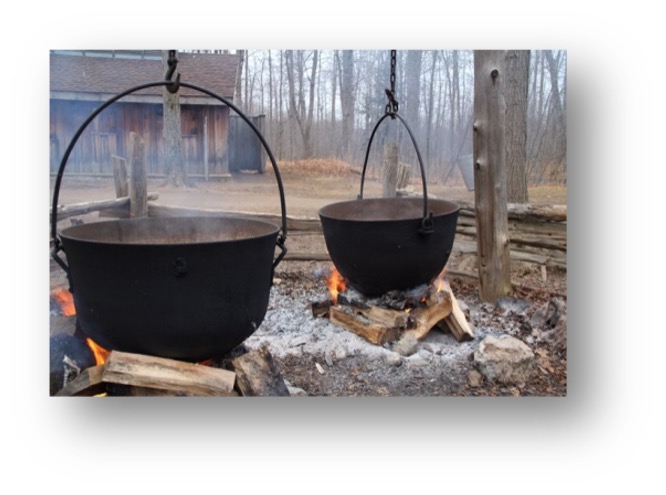
Originally my grandfather used a large steel kettle over an outdoor fire to boil down the sap but over the years the kettle was replaced by more efficient flat boiling pans. The maple syrup was then poured into quart sealers and stored in the basement cold cellar. A lot of syrup was boiled further to produce maple sugar. The maple sugar would replace store bought sugar, a good money saver during the depression.
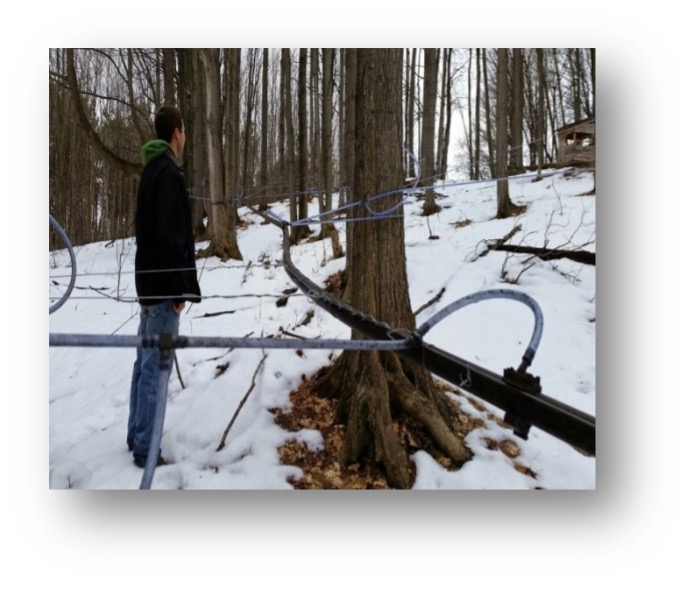
The process of making collecting and making maple syrup has changed over the years, but visiting a maple wood lot during syrup season remains a great experience for young and old. The tapped trees, the “sugar” shack, the smell of the boiling sap, the taste of fresh syrup and maple sugar create life time memories…a great late winter family outing!!
Our Pioneer Ancestors
LOUISA MANN, lots 16 and 17, concession 5, was born in the Township of North Gwillimbury in the year 1827. Her maiden name was Louisa Prossor, being a daughter of John Prossor, Esq. The latter was one of the leading men in the township in the early days and was commissioned a Justice of the Peace; his fatherly advice whilst acting in that capacity is still remembered by many in the section. He was an elder of the Christian Church, and was a devoted and consistent member. He died about the year 1852, deeply regretted by all the old settlers. Mrs. Mann was married in 1844 to Darius Mann; they had a family of five children, four of whom are living.
From the History of the County of York, C. Blackett Robinson – Publisher 1885, pp. 502-503.
The Smallwood Cabin
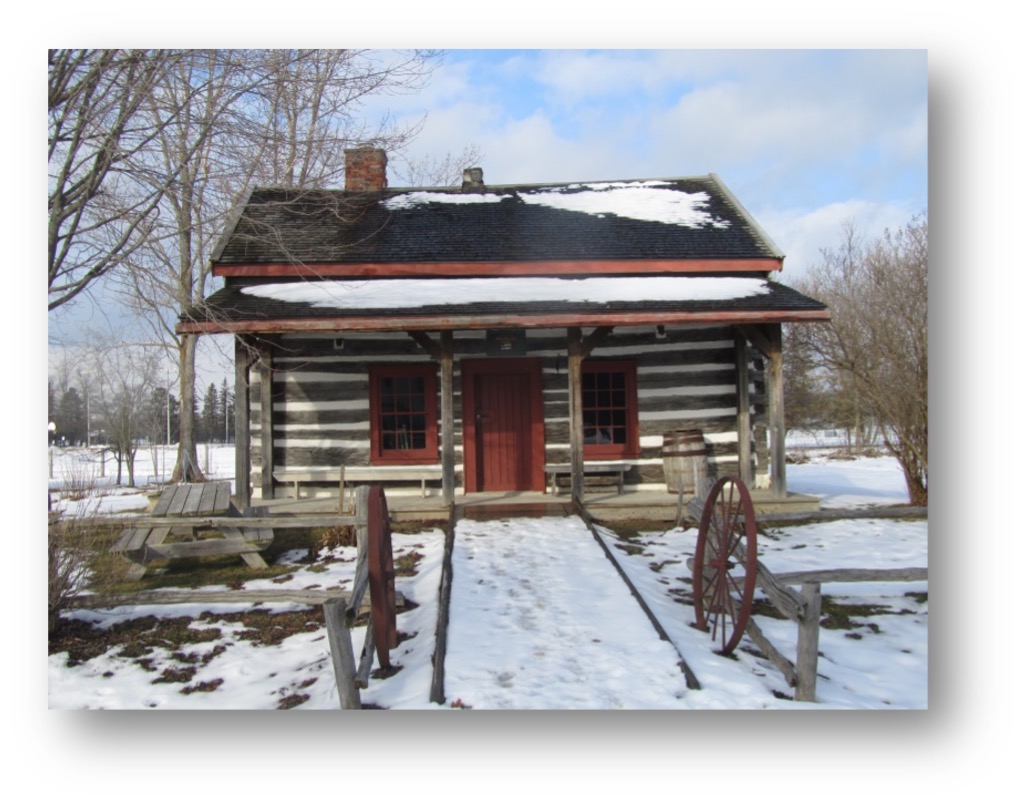
The Georgina Historical Society 2022 calendar features the Smallwood cabin for the month of February. The Smallwood cabin was built in 1866 and was located in Elmgrove.
It was one of the first two buildings moved to the Pioneer Village in 1974.
Where in Georgina?
Here is our new mystery place; what and where is the location of the image to the right?
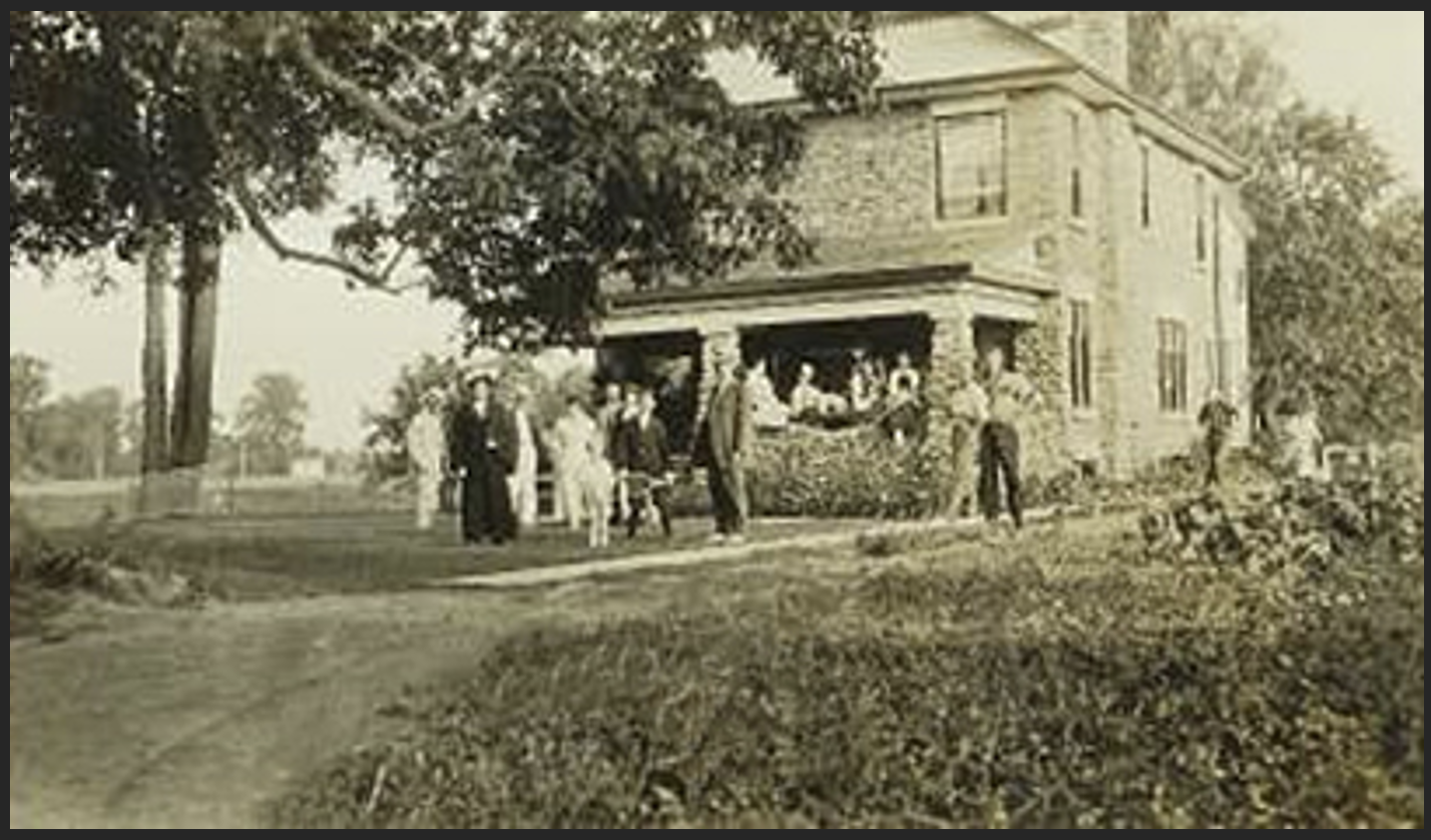
News & Events
Though many COVID restrictions will hopefully soon be lifted, there is still much uncertainty regarding our meetings and events. Therefore we have no meetings or events scheduled as yet and will advise the membership as soon as we have enough information to begin planning them again. As soon as there are any changes, we will advise you all by e-mail. Thank you for your patience and understanding. Be safe and stay well.
Get your 2022 GHS calendar!
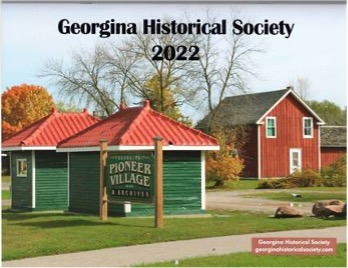
We still have a small number of calendars for sale. All proceeds will be used for refurbishing the caboose at the village. Help us with this excellent cause! To purchase your calendar please contact a Board member or Tom Glover at:
905-722-0180 or 905-830-2575
Or e-mail him at btglover@rogers.com
